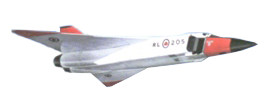The story of the Avro Arrow is well known and a tribute to what could have been for Canada’s aerospace industry. Often forgotten in the story of the Arrow is the impact its cancellation had on both the social and economic life of the factory towns that aided in its construction, such as Nobel and Malton. Over 200 employees worked testing Orenda engine parts that were to be used in the Arrows. By 1959 the Arrow project was cancelled and the industrial prospects of Nobel were denied with it.
Below is a quick look at the exhibition...
"On April 18, 1958, Jan Zurakowski took RL-201 on its seventh flight. He flew over Tobermory then back towards Peterborough and Kingston. The aircraft reached a height of 50,000 feet and speed of mach 1.52 (approximately 1000 miles or 1,600 km per hour). The Royal Canadian Air Force did not release any more data on the test program after that flight, but engineers noted that the plane was still climbing and still accelerating. Fitted with Iroquois engines, the Arrow would undoubtedly have broken speed records.
As the Iroquois engine was developed, the engineers looked for an aircraft to test it on. Few planes could handle the weight and thrust of the Iroquois and the American B-47 bomber was chosen. Only thirty-one hours of flight testing were completed, and the engine’s acceleration was described as “fantastic.” During flight testing, the Iroquois could not run at full power; the thrust would have shaken the B-47 apart.
Nobody ever admitted giving the order to destroy everything related to the Arrow and Iroquois projects. The destruction of the planes, parts, drawings, documents and photographs was carried out quickly, but many items survived. Some people kept their tools as souvenirs, some kept Arrow and Iroquois parts or drawings but many left on Black Friday with only their memories."
|
Click here to few a video of our curator/manager, Nadine Hammond, discussing the exhibition with YourTV. |
 |


